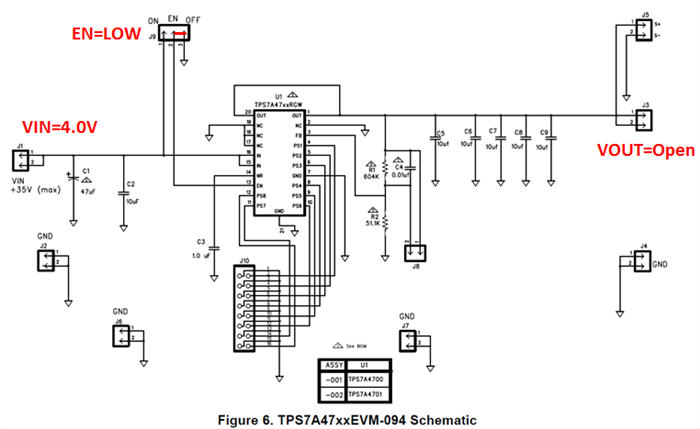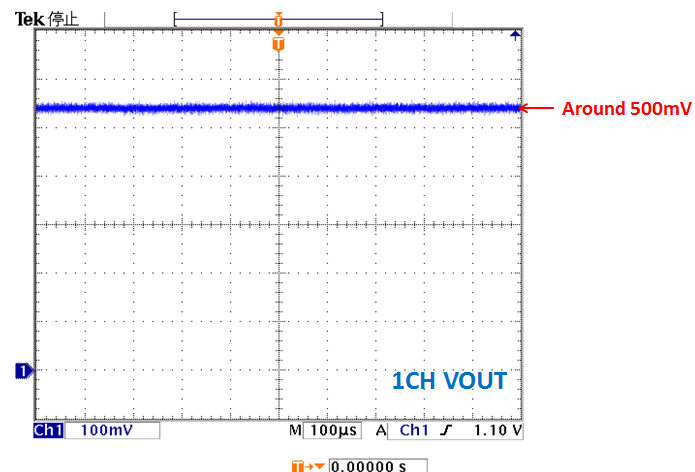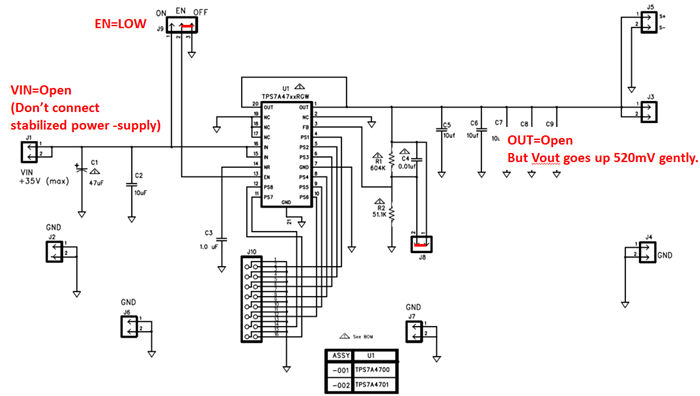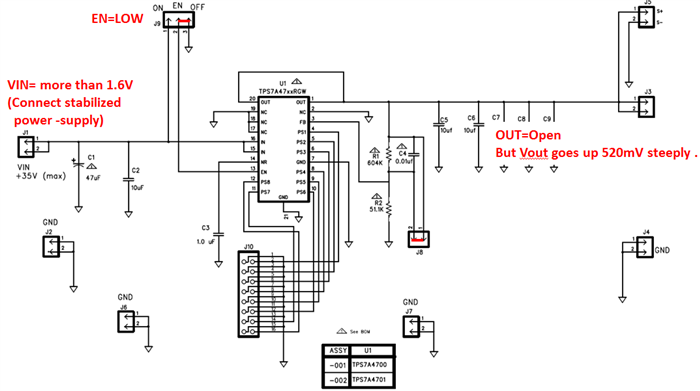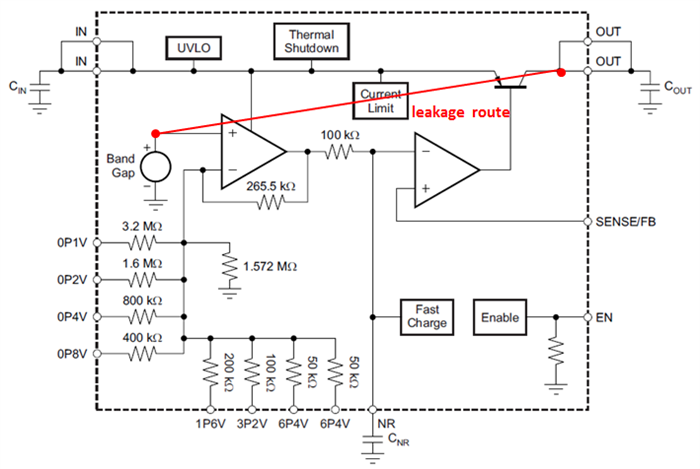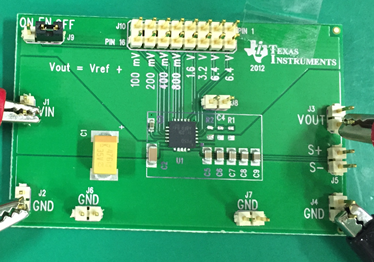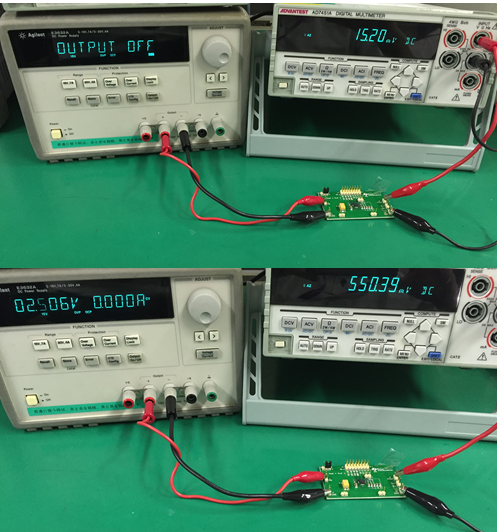Hi Team,
We are evaluating TPS7A4700EVM.
Then, output voltage is around 500mV at the shutdown (EN=Low).
(Please refer to the following waveform.)
Is this behavior right?
If yes, could you please let us know this cause and if you have any workaround?
Regards,
Kanemaru


